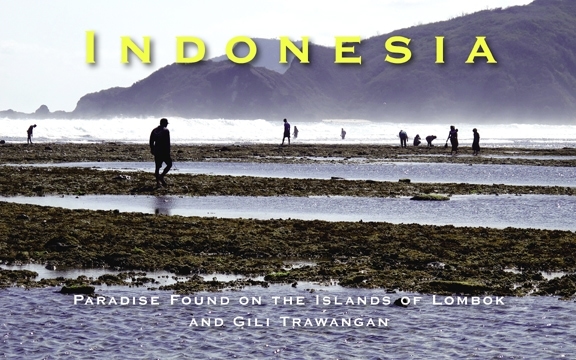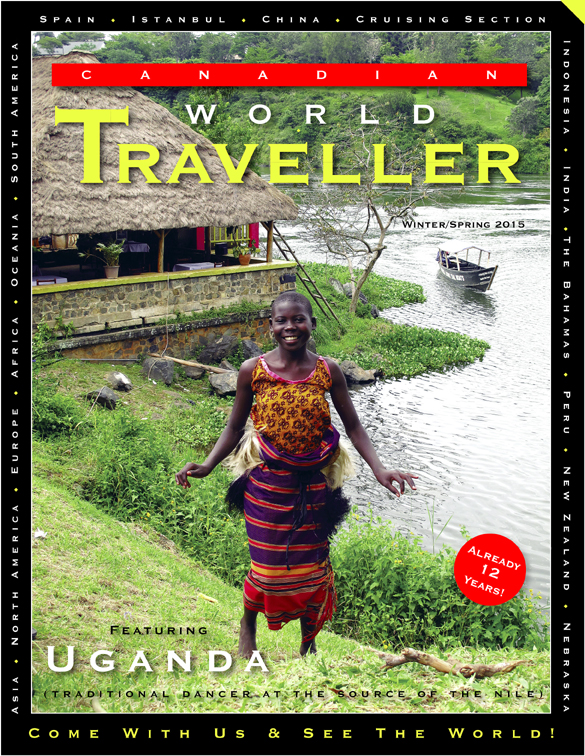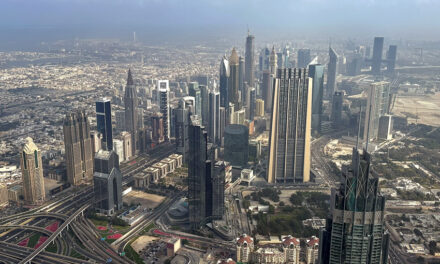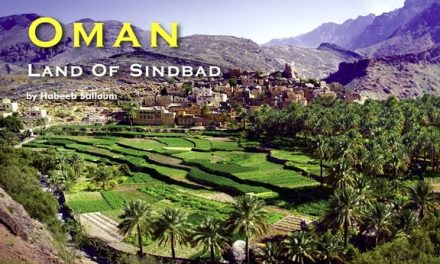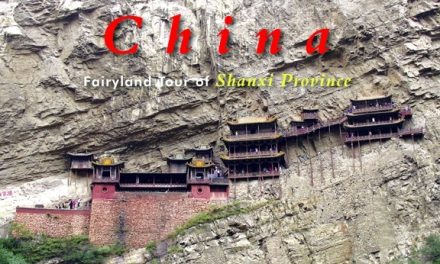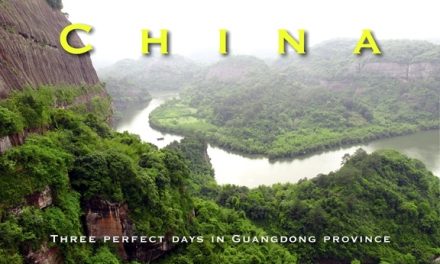Indonesia
Paradise Found on the Islands of Lombok and Gili Trawangan
by Michael Morcos

Lombok is one of the most visited islands in Indonesia and is right next door to the popular vacation destination of Bali. Lombok is small, hilly and beautiful, offering travellers a lot to do, including a visit to the volcano in the middle of the island.
The great and unique culture of these delightful islands are the product of age-old- traditions from the time of early migrants and the Western thought brought by Portuguese traders and Dutch colonists. They espouse some guiding principles for life, including the concepts of mutual assistance or “gotong royong” and consultations or “musyawarah” to arrive at a consensus or “mufakat”.
Some of my best memories came while I was meandering among the wonderful in Indonesia artisans. Art is a focal point of island life and locals are artistic by nature, expressing themselves on canvas, wood, metals, clay and stone. The locals are very laid back with no real industry or manufacturing, and most people work on the land. Money does not seem to be the focus as much as a good quality of life, and the people seem genuinely happy.
Tour of the towns
As we were staying about seven minutes from Senggigi, the main tourists centre. Though there are many shops and restaurants, Senggigi is not your typical tourist resort town like those in Bali, but there are enough bars, lounges and beach side restaurants to keep people looking for relaxation quite satisfied.
Many visitors, like us, use Senggigi as a base and take day trips to the waterfalls, the Gili Islands, or just go exploring the still authentic villages, temples, and forests all found within a couple of hours drive.
Senggigi is now becoming increasingly popular with visitors seeking out the stunning scenery and unique culture and flavours of Lombok.
Touring the island, we visited some of the townships including Mangsit, with tranquil, sweeping beaches, which are also known as the gateway to the activity centres of Gili Islands, Tanjung and Mount Rinjani. That afternoon, we decided to relax on the long, calm beaches of Kerangdangan. The evening we spent on the coastal road of Batu Bolong among the cafes, restaurants, several karaoke style bars and a large nightclub.
Both Mangsit and Batu Bolong are more tourist-focussed, with hotels and entertainment along their beachfronts, where the centre of Senggigi has a more lively, street festival feel to it with live music playing and people moving about from one venue to another throughout the night.
We spent another day exploring the villages bordering the Gunung Rinjani National Park, and the park itself. Our walkabout was led by friendly guides who welcomed us in the village of Sajang. The villagers were friendly and took time to explain the customs and traditions of local village life and how they support their daily livelihood by growing coffee, chocolate and vanilla. Depending on the season you visit, you can take the opportunity to work side them for a unique experience!.
The Gunung Rinjani National Park
The Gunun Rinjani National Park lies in an area where the animals and plants of South East Asia make a dramatic change into species that are more typical of Australasia. The Park has a rich variety of life, although they can be hard to spot due to the forest cover!
An amazing array of animals can be found within the confines of the park, including the rare black Ebony leaf monkey, locally known as Lutung, who are sometimes seen early in the mornings. Other animals are just as unique, including the he Long tailed grey macaque, the Rusa deer occasionally seen along the Rinjani trek trail with the smaller, peculiar Barking deer (Kijang) that has a distinct dog-like bark when sounding alarm. Though we did not see any, Leopard cats (Bodok), Palm civets (Ujat) and Porcupines are also found in this wonderful park.
The national park is also a bird lover’s dream come true, flocks of colourful birds live in the trees of the Park including the iconic Sulphur Crested Cockatoo which cannot be found any further west of Lombok! Many of the forest-dwelling animals, insects, birds, civets and monkeys owe their survival to the wild fig tree or Beringin as a provider of food and shelter. A vast selection of Orchids are also a feature of the grassland areas, as is the Edelweiss growing above the tree line, it is the beautiful icon of the Park.
Gili Trawangan – Diving, partying and.Yoga?
There is nowhere better to go diving than Gili Trawangan! It is the centre of a thriving diving industry and all big operators have their main dive shops located on the island. There are almost a dozen active dive sites, and there are daily fun dives for all levels of divers.
A world class teaching centre, there are also fun dives, muckdiving, technical diving and wreck dives with very professional instructors, and the visibility is usually good. We went to Freedive Gili, located close to the harbour. Owned and operated by British freedive record holder Mike Board, he offers freedive and apnea (breath holding) courses for anyone, beginner to advanced. Never far behind new trends, Gili Trawangan offers fly-boarding, which allows you to fly like Iron Man by using water jets.
Meals were exotic and delicious. The food was fantastic and the seafood was always fresh, as we often went to fisherman’s beach, and took advantage of the low-tide oyster hunters. Our hotel offered us our own modern hut with a sitting area in the front and a private outdoor washroom and shower in the back.
At night, the island comes alive with music and dancing. Among the back-packing community, the island was once known as a party destination with many establishments hosting wild dance parties. Today, though not quite as wild, tradition now has one establishment per night playing music and hosting a dance party until 4 am.
There are seven venues hosting parties, but the most anticipated ones are the funk house and hard music by tourists and locals parties with local DJ’s in spinning disks.
If wild dance parties are not to your liking, many restaurants and bars, including the Tirnanog – Irish bar, provide a range of more sedate and social gathering point for Al fresco dinning and drinking by the water’s edge.
Yoga Paradise
There are several yoga studios for practitioners, and there is nothing more relaxing than Yoga under the tropical trees and sun. We took advantage of the daily Yoga classes offered by the Gili Yoga Center that shares an office with Freedive Gili and the Yoga Place. Gili Yoga Center, along with daily meditation and pranayama, they have luxury accommodation, offer group activities (snorkeling, sunset boat ride) and gourmet vegetarian food.
The Yoga Place offers yoga and meditation classes throughout the days for all levels. Inside is the vegetarian Garden Cafe overlooking Gili Trawangan Island, away from the crowds and offers a tranquil respite from a busy day. The Yoga Place has daily drop-in classes, multiple day courses and workshops, daily sunset yoga on the beach, free hilltop sunrise meditations and free yoga for Indonesians. I especially enjoyed the evening sunset yoga after a day of exercise and adventure!
Spirituality
Yoga, art, theatre – all these elements of the local society is marked by the spiritual heritage of the islands. We were lucky enough to be invited to the annual Hindu ceremony of Mulang Pekelem, that dates from the 18th century invasion and subsequent settlement of the island by Balinese from the kingdom of Karangasem. The celebration attracts hundreds of celebrants
Mulang Pekelem is a wonderful ceremony of prayers and offerings made for the safety and prosperity of the islanders, dating from a time shortly after the Hindu settlement in west Lombok was afflicted by a long drought and an epidemic. At that time, the king had a vision and commanded a series of ceremonies in which gifts of gold, silver and copper, in the shape of fish and prawns be offered to the gods at the lake before each rainy season (December to March). The offerings and prayers are for peace and prosperity for all.
Visit: www.indonesia.travel

